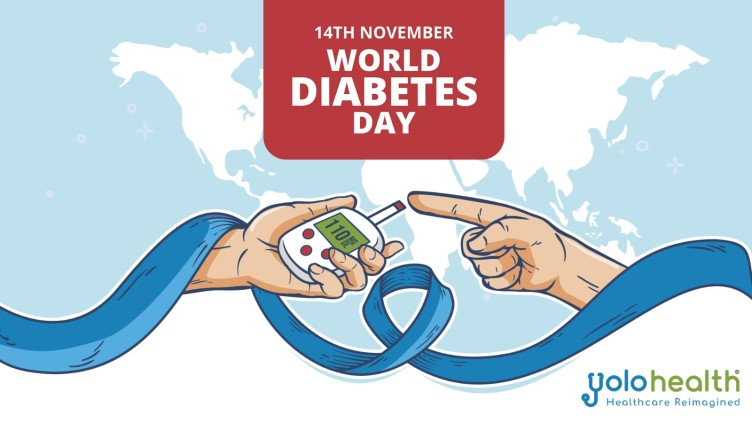Diabetes Capital of the World: Can India Shed This Title?
India, known for its vibrant culture, rich history, and diverse population, also holds an unfortunate title: the “Diabetes Capital of the World.” With one of the highest diabetes rates globally, this chronic disease has become a major health concern for millions of Indians. Understanding the scale of the issue and the factors behind it is essential for tackling the crisis.
World Diabetes Day: A Global Call for Action
Each year on November 14, World Diabetes Day serves as a reminder of the growing diabetes epidemic worldwide and a call to action to fight this chronic condition. Established by the International Diabetes Federation and the World Health Organization in 1991, World Diabetes Day brings together people, communities, and health organizations to increase awareness, promote preventive strategies, and improve access to care.
Let’s explore why diabetes is so prevalent in India, how it affects lives, and what can be done to address it.
The statistics around diabetes in India will leave one surprised:
•77 million adults in India currently have diabetes, with another 25 million likely to develop it within the next few years.
•By 2045, India is expected to reach 134 million diabetes cases – an alarming increase.
•Approximately 1 in 6 people with diabetes globally live in India.
•In 2019, diabetes was responsible for around 1.6 million deaths in India, directly or indirectly.
With numbers like these, diabetes has become a public health emergency that demands urgent action.
Why Is India So Vulnerable?
Several unique factors contribute to the high prevalence of diabetes in India:
1.Genetic Susceptibility: Research suggests that people of South Asian origin are genetically more prone to developing diabetes. Indian bodies tend to store more fat in the abdominal area, which increases the risk of Type 2 diabetes.
2.Rapid Urbanization and Lifestyle Changes: With rapid urbanization, traditional lifestyles have changed dramatically. With an increased rate of sedentary lives, consuming more high-calorie, processed foods. This shift has increased the rates of obesity, a significant risk factor for diabetes.
3.Rising Stress Levels: Urban life in India comes with high levels of stress, whether it’s from work, commuting, or managing family responsibilities. Stress contributes to hormonal imbalances that can increase blood sugar levels, ultimately leading to diabetes.
4.Lack of Awareness and Preventative Care: Diabetes is often referred to as a “silent killer” because many people are unaware they have it until they experience complications. Regular screenings and preventative care are not yet widespread in India, leading to late diagnosis .
5.Economic Challenges: Diabetes treatment can be expensive, involving regular medication, glucose monitoring, and lifestyle adjustments. For many Indians, this financial burden limits access to proper care, contributing to uncontrolled diabetes and severe complications.
The Consequences of Diabetes
Diabetes doesn’t just affect blood sugar; it has serious health consequences that impact quality of life:
•Heart Disease: Diabetes significantly increases the risk of heart disease, with studies showing that 52% of heart attacks in India occur in individuals with diabetes.
•Kidney Damage: About 30% of people with diabetes develop kidney complications. In India, diabetes is a leading cause of chronic kidney disease.
•Vision Problems: Diabetic retinopathy, a condition that affects the blood vessels in the eyes, can lead to blindness. It’s estimated that 18% of diabetics in India suffer from this condition.
•Foot Problems: Diabetes can cause nerve damage, leading to severe foot issues and even amputations if not managed well.
What Can Be Done?
Tackling diabetes on a national level requires a multipronged approach:
1.Awareness and Education: The government, NGOs, and healthcare providers must work together to spread awareness about diabetes risk factors, symptoms, and management.
2.Encouraging Healthy Lifestyles: Initiatives like fitness programs, accessible nutrition advice, and community wellness events can help people adopt healthier lifestyles, reducing diabetes risk.
3.Affordable and Accessible Healthcare: More affordable diabetes screenings and treatments would allow for earlier diagnosis and better management.
4.Technology and Innovation: Digital health tools such as mobile apps for glucose monitoring, diet tracking, and telemedicine consultations can play a major role in managing diabetes, particularly in rural areas.
5.Regular Screening: Getting screened for diabetes regularly, especially for those with a family history of the disease, can help catch it early and manage it effectively.
Though diabetes is a serious challenge for India, it is not unbeatable. With increased awareness, better access to healthcare, and a commitment to healthier lifestyles, India can begin to curb this epidemic. By making lifestyle changes, individuals can take control of their health, while community and government efforts can create a supportive environment for sustainable changes. Diabetes is a wake-up call for India. The journey to overcoming this health crisis won’t be easy, but with concerted efforts, India can shed its title as the “Diabetes Capital of the World” and move towards a healthier future.

